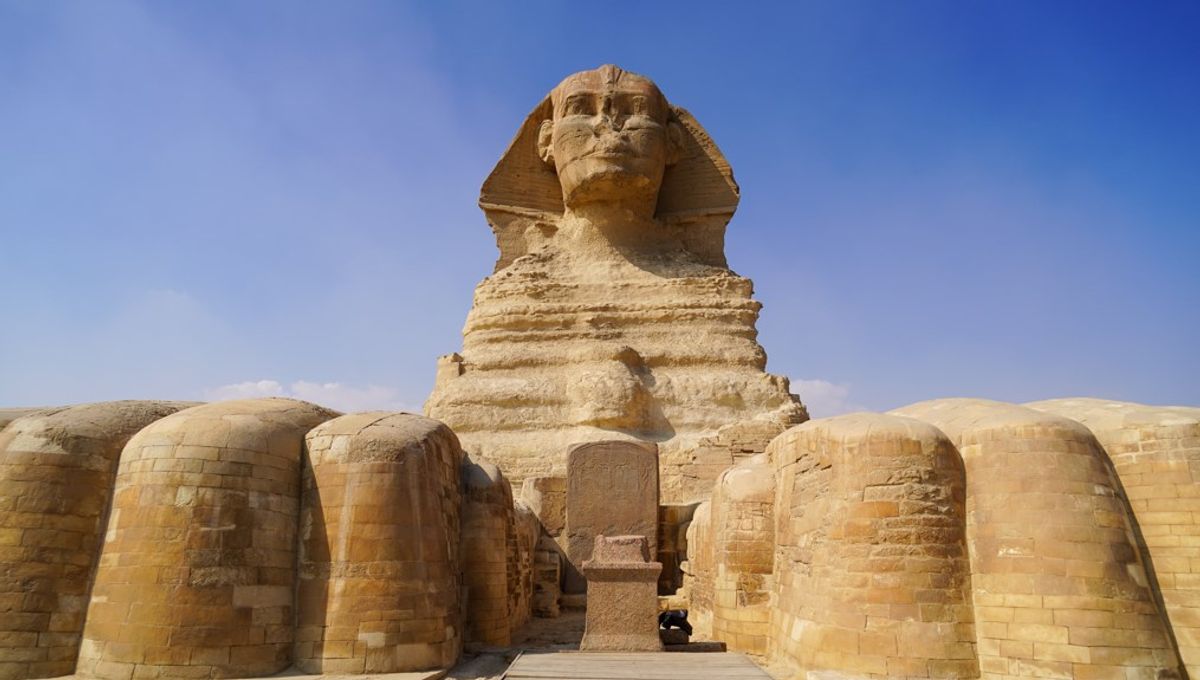
Like the pyramids, the Great Sphinx of Giza is shrouded in mysteries that have kept archaeologists busy for centuries, yet new research suggests the answers may be blowing in the wind. After replicating the weather conditions that existed at the time the monument was constructed, the study authors found that the landmark’s basic form may have been shaped by erosion, leaving only the finer details to be carved by humans.
“Our findings offer a possible ‘origin story’ for how Sphinx-like formations can come about from erosion,” said researcher Leif Ristroph in a statement. “Our laboratory experiments showed that surprisingly Sphinx-like shapes can, in fact, come from materials being eroded by fast flows.”
The study authors were inspired to conduct their experiments after noting that deserts around the world are littered with unusual rock formations called yardangs. Formed by wind erosion, yardangs are often roughly similar in shape and proportion to the Great Sphinx.
This led to the hypothesis that the iconic statue might have started out as a natural yardang that the ancient Egyptians envisioned as a mythical creature with the head of a human, the body of a lion and the wings of an eagle. Rather than building the Sphinx from scratch, then, the monument’s creators might have simply fine-tuned an existing landmark in the desert.
“There are, in fact, yardangs in existence today that look like seated or lying animals, lending support to our conclusions,” explained Ristroph.
Attempting to prove the credibility of this theory, the study authors mimicked the terrain of Giza by constructing mounds of soft clay with harder, less erodible material embedded inside. These structures were then placed within a water tunnel, which replicated the prevailing winds of northeastern Egypt.
Observing the effects of erosion on their miniature yardangs, the researchers describe how “a featureless mound transforms to a majestic lion.” As the fast-moving water stripped away the clay, the more resistant materials took the form of a cylindrical head, which then created a “wind shadow” that shielded the body.
The creature’s curved back was then carved by a “turbulent wake”, while an accelerated flow beneath the head shaped the neck, forelimbs and paws of the mythological beast. “The unexpected shapes come from how the flows are diverted around the harder or less-erodible parts,” said Ristroph.
Summing up the possible implications of yardang formation in Giza, the authors conclude that “these results show what ancient peoples may have encountered in the deserts of Egypt and why they envisioned a fantastic creature.”
The study has been accepted for publication in Physical Review Fluids and its abstract was presented at the 75th Annual Meeting of the APS Division of Fluid Dynamics.
Source Link: The Great Sphinx May Not Have Been Carved By Humans Alone